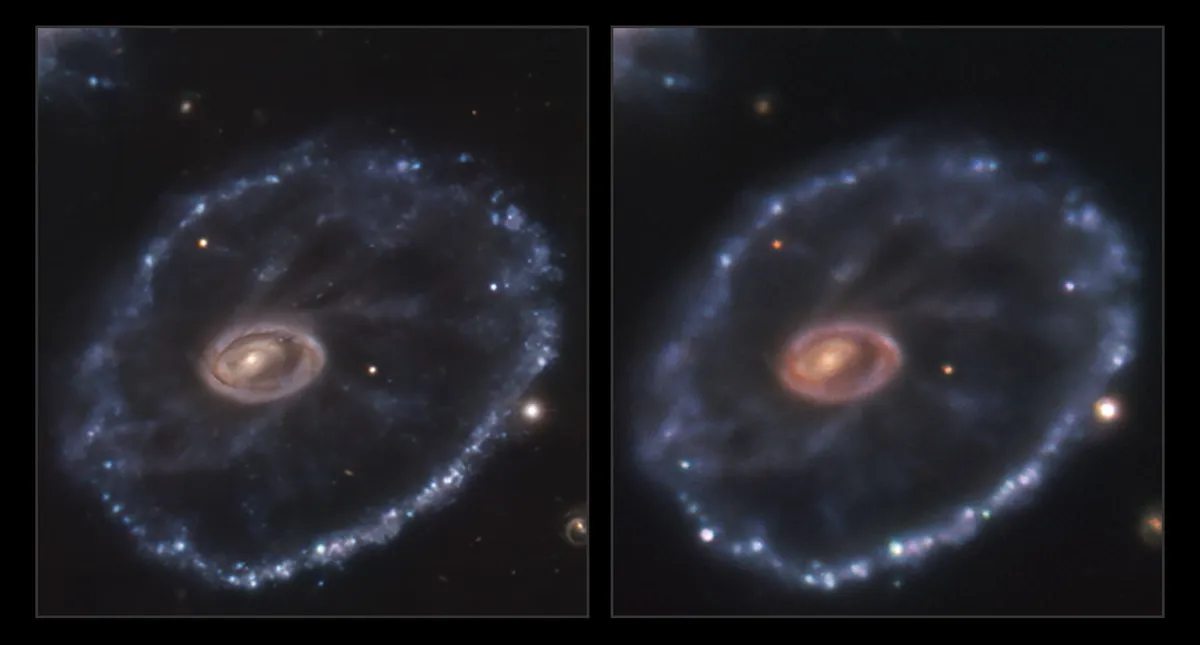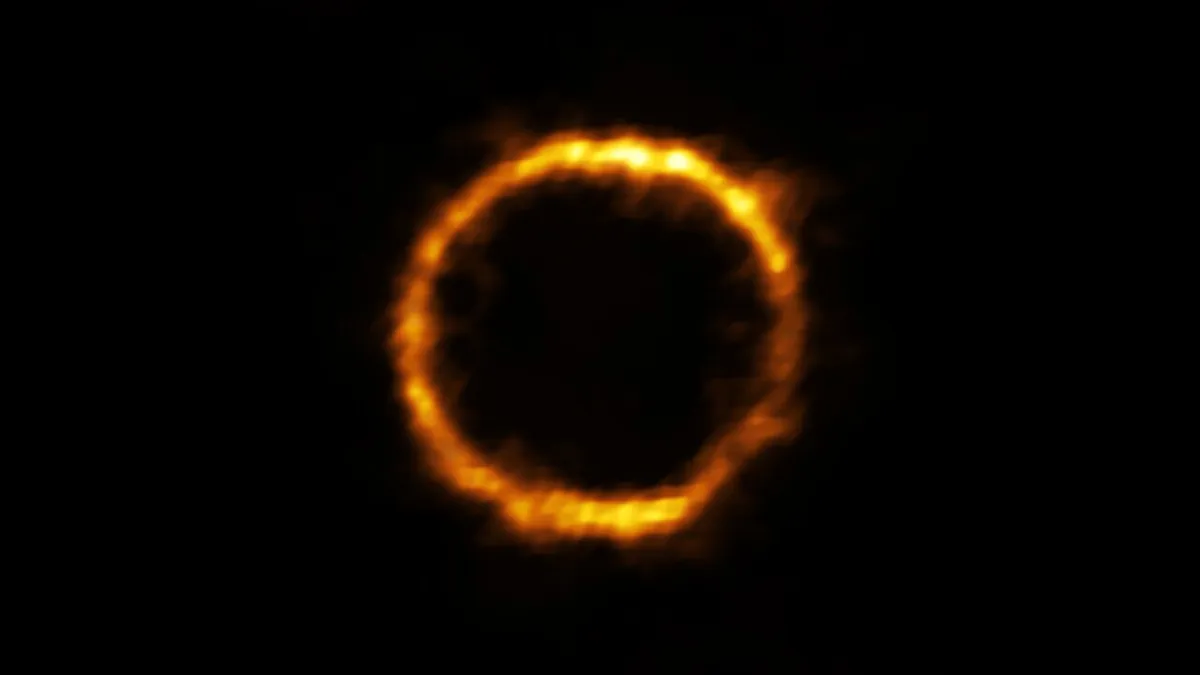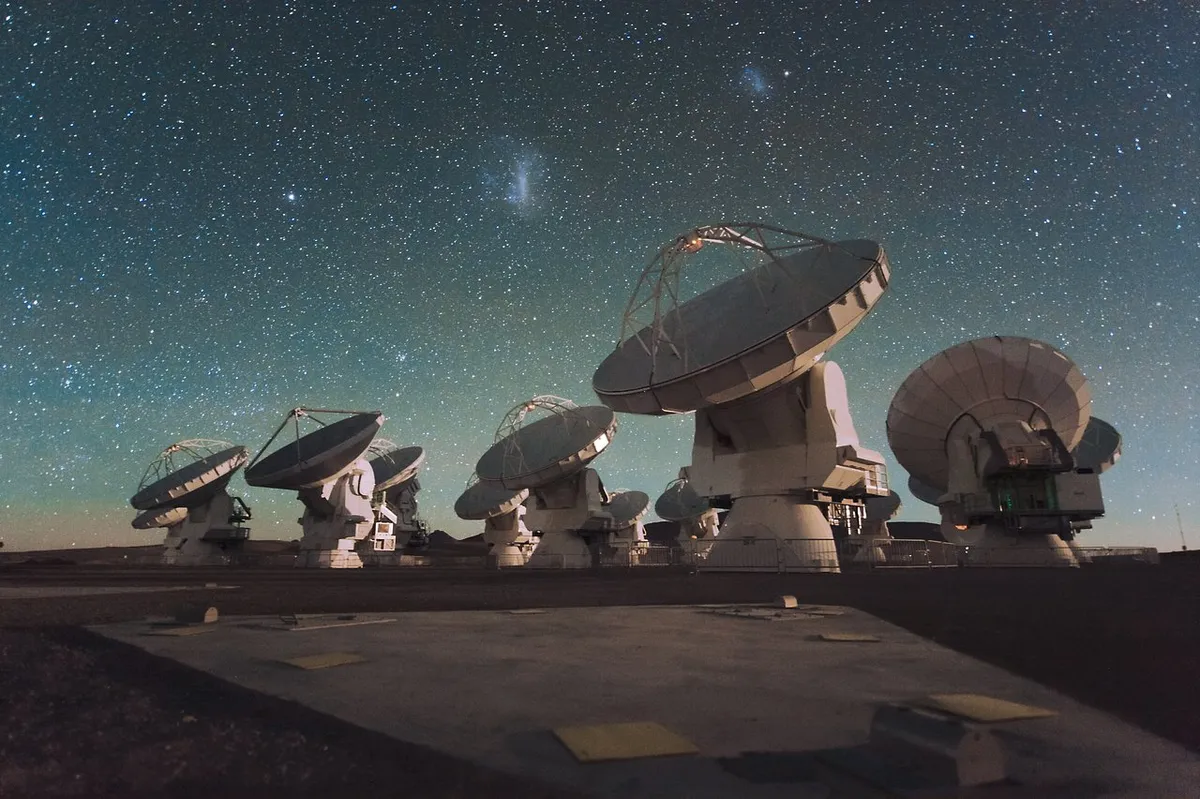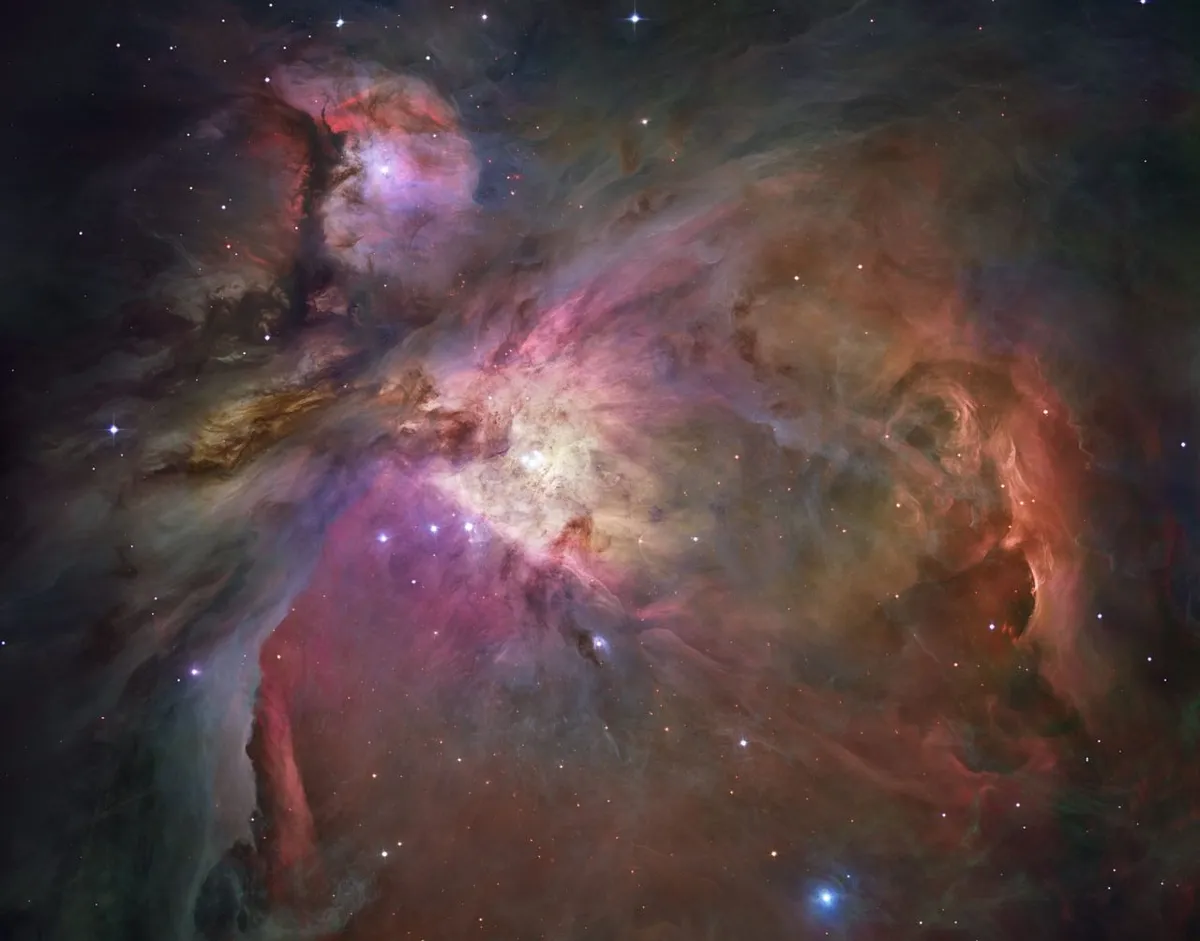For years, I got to work on Stargazing Live, enabling the large audience assembled by Brian Cox and Dara O’Briain to contribute to science via their web browsers.
Working with the fabulous Zooniverse team, over the years we looked for exoplanets, for strange ‘spider’ features on Mars and even measured the age of the Universe by finding supernovae.
But the most fun I had was looking for gravitational lenses in 2014.

The goal was to find the images of distant galaxies that have been deformed, and most likely magnified, as their light passes by nearby massive systems such as other galaxies and clusters.
The gravity of these nearer systems bends the incoming light and, if things line up just right, the images end up looking like little blue rings or arcs that we can use to get information about the distant Universe.

Over three consecutive nights, Stargazing Live asked its viewers to look through millions of images taken by the Dark Energy Survey to identify potential lenses.
By lunchtime the day after the first show, we thought we had a good candidate in the form of a ring. It wasn’t blue, but red, but it definitely looked like a bona fide lens: the catchily named 9io9 (or 9Spitch).
‘Maybe’ wasn’t good enough for Brian or his producers, though.
We needed a radio telescope to confirm the discovery, and so viewers on the show’s second evening saw the Lowell telescope in Arizona taking data confirming galaxy 9io9 was a distant system.
The light reaching us today set off 11 billion years ago, when the Universe was just 2.5 billion years old.
Since the discovery, a team led by Jim Geach at the University of Hertfordshire has been observing the galaxy, finding that it is a remarkably efficient factory of stars.
But how do galaxies undergoing extreme star formation in the early Universe behave?
Recently they’ve being using ALMA, a sub-millimetre array situated on the high, dry Atacama Desert in Chile, capable of detecting faint radiation from molecules such as carbon dioxide and ammonia.

These typically exist in the dense gas associated with star-forming regions, where they get excited and shine in the wavelengths ALMA looks at.
It seems, from the observations, that ammonia and hence star formation is spread throughout the galaxy’s disc, rather than concentrated in one particular region.
If 9io9 is typical, that settles a long-running argument about these extreme star-forming galaxies.
Some thought such prodigious feats of star formation would only be possible if concentrated into a single massive complex, perhaps at the galaxy’s centre – but instead the whole galaxy seems alive with newly forming stars.
Its properties, and in particular the strength of the emissions from ammonia and carbon dioxide, look rather similar to those in our own local stellar nursery, the Orion Nebula.

It turns out that what Stargazing Live viewers found is what Matus Rybak, a PhD student in Garching, Germany, described as a galaxy "full of Orions".
Each of them, the authors say, might be individually unremarkable, but they add up to a galaxy the likes of which transformed how the Universe looked.
Almost as remarkable, a discovery made collectively by thousands of viewers watching TV on a cold January night eight years ago continues to expand our knowledge of that distant and ancient cosmos.
Chris Lintott was reading Ammonia in the Interstellar Medium of a Star- Bursting Disc at z=2.6by M J Doherty et al. Read it online at arxiv.org/abs/2209.09268.
This article originally appeared in the November 2022 issue of BBC Sky at Night Magazine.
